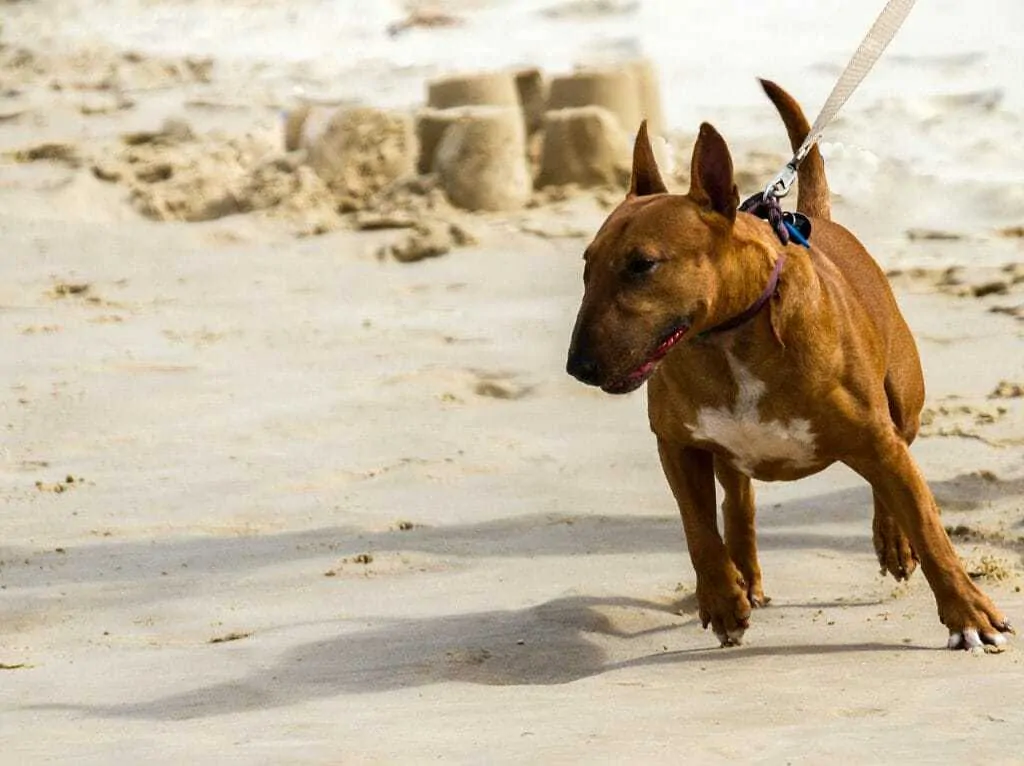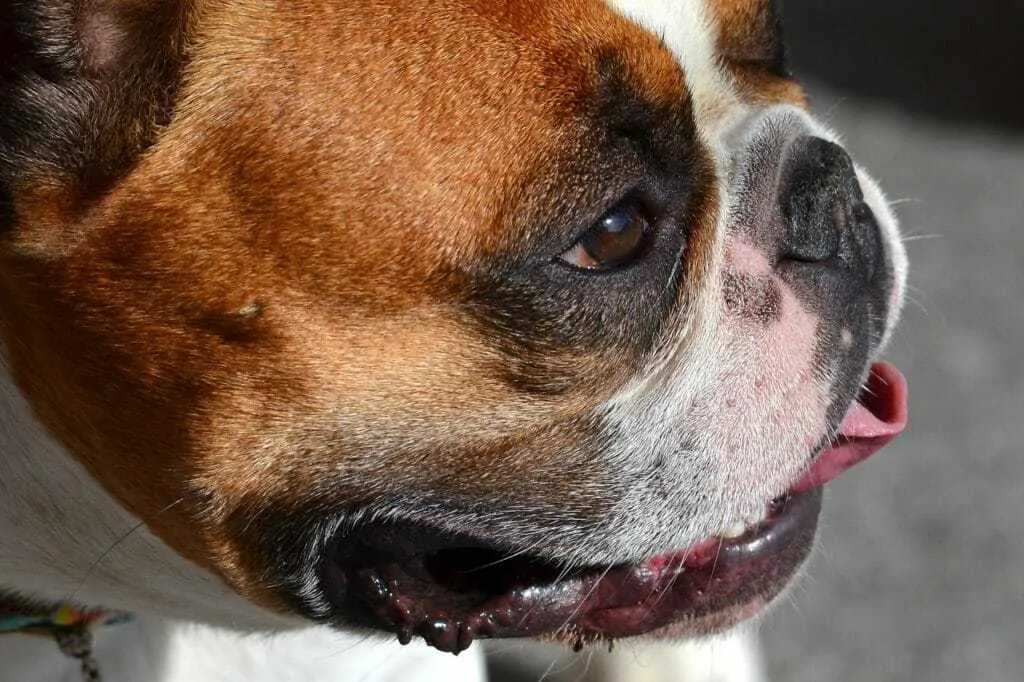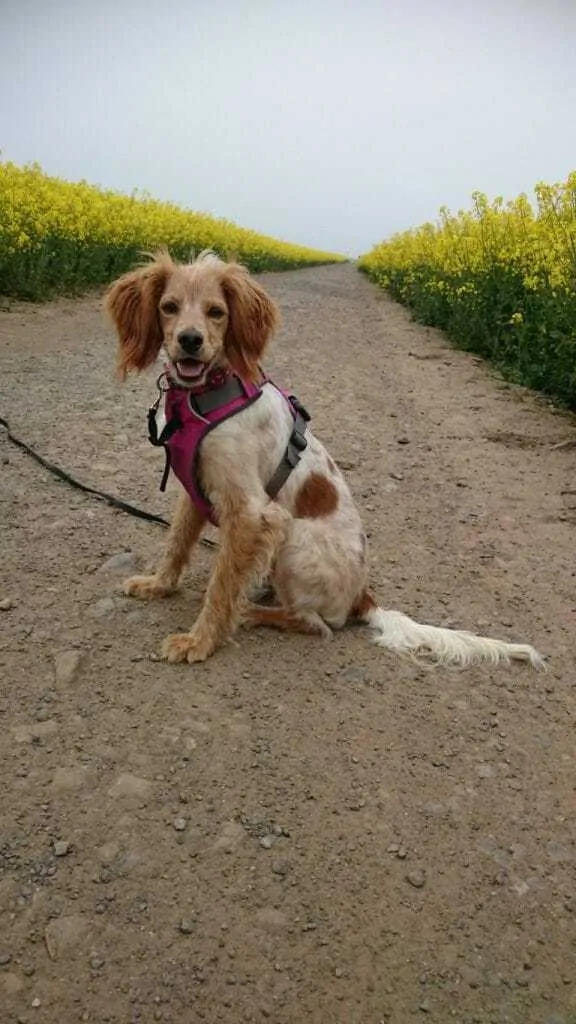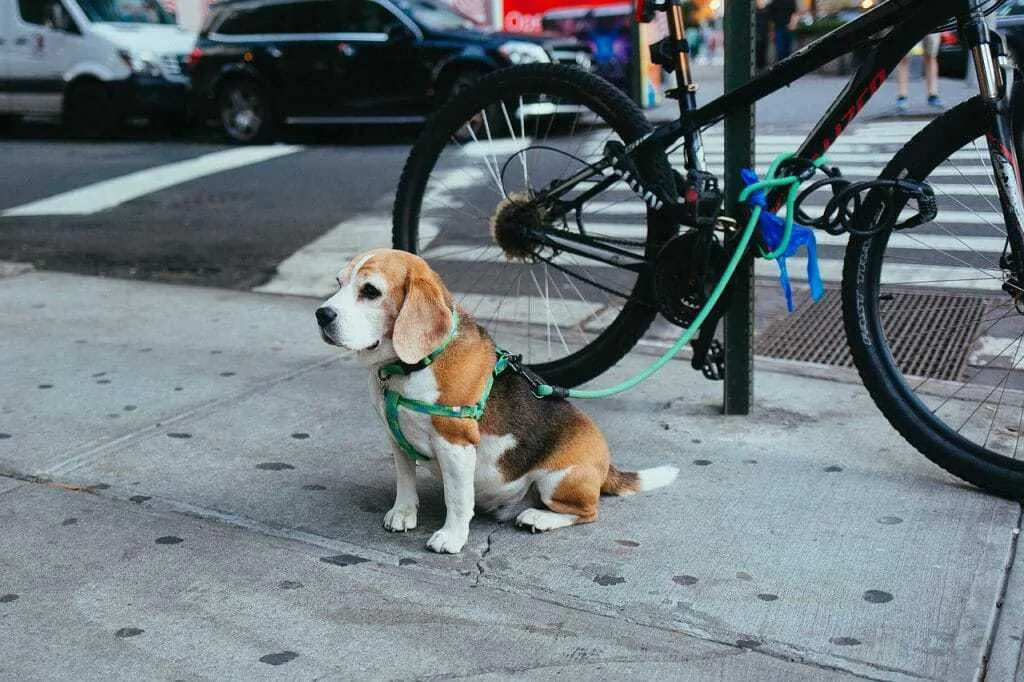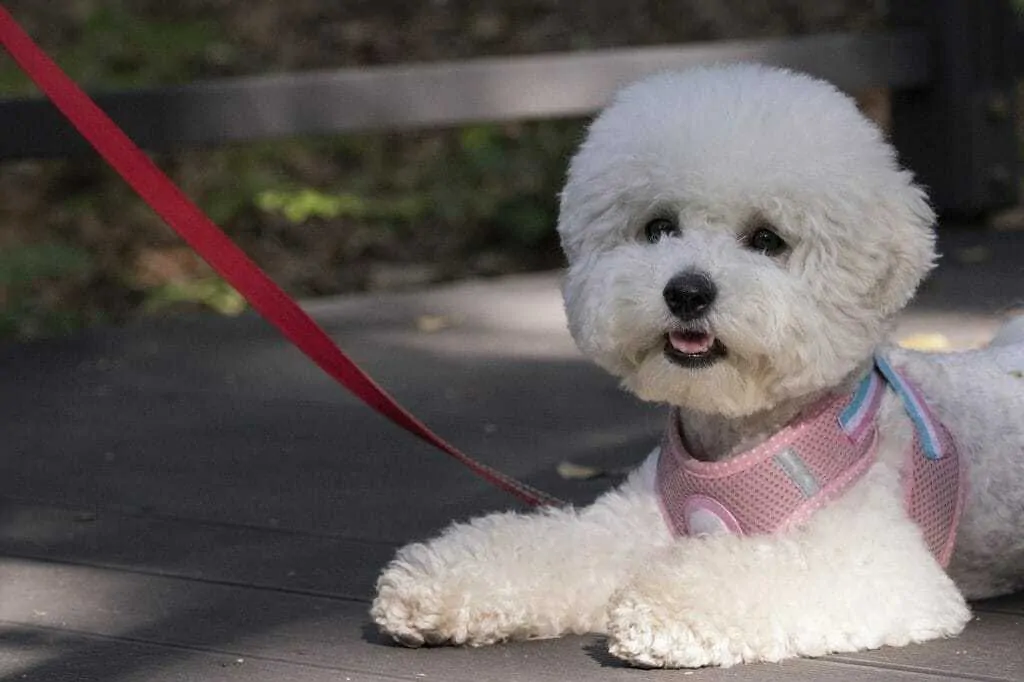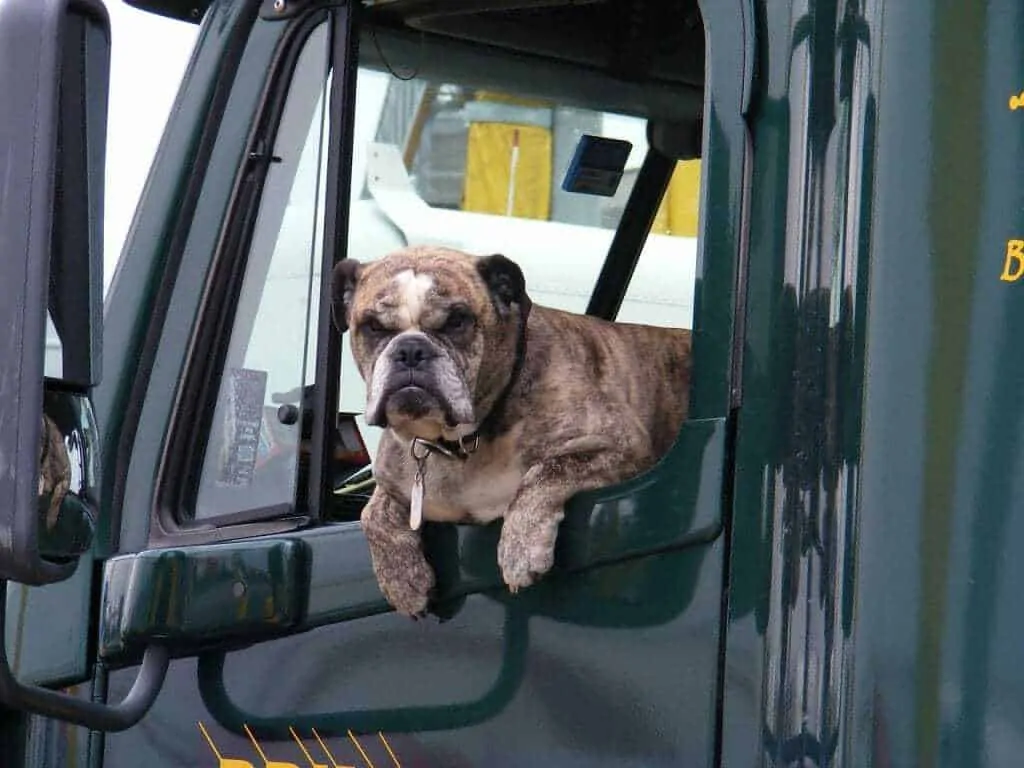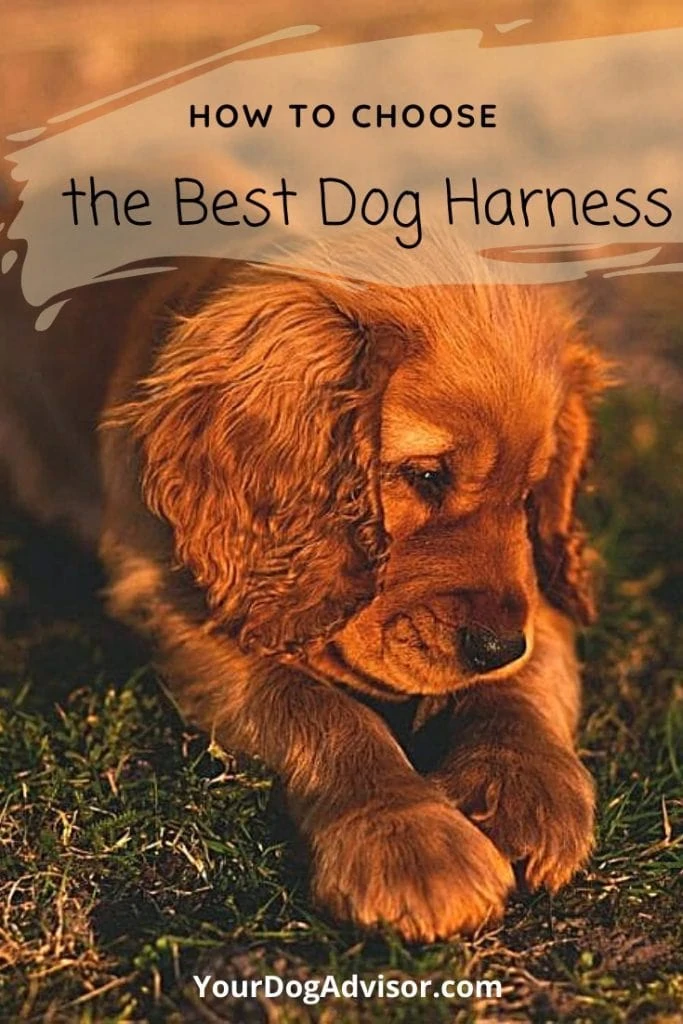Looking for the best dog harnesses? You are going through your list of To Dos for your new puppy/adopted dog and you are feeling overwhelmed. You have the collar and leash right at the top of the list but then someone asks you if you have a harness. You thought that a collar was enough. It can be, but there are a number of benefits to using the best harness that this article will go over to help you decide if it is something you want to invest in.
Contents
What is a Dog Harness?
A harness is another tool that allows you to attach a leash to a dog, unlike a collar though, it does not just attach to the neck but instead, it is strapped around more of the upper part of the body, typically around the shoulders and rib cage.
What Sort of Injuries are Common From Pulling on a Collar
Injuries from using a collar are much more common than those on dogs using a harness. Some can just be minor but there are those that can cause long term, painful damage.
A dog that wears a collar and constantly strains against the leash can have breathing issues, be uncomfortable and possibly sustain more long term damage
1. Increased Risk of Neck and Back Injuries
Probably the number one reason to consider using a well fitting harness is that it greatly reduces the possibility of your dog developing a problem with their neck or receiving a nasty tracheal injury.
Injuries to the neck and spine as a result of excessive strain to the neck by a collar are more common than you might think. Not only can it be extremely uncomfortable for your dog but there are actually proven conditions that can develop from long term pulling on a collar. It is also possible for your dog to sustain an injury from one very hard jerk, so if they run very fast to the end of a long leash on a collar and are jerked back it can be risky.
Your dog can suffer from whiplash, muscle or nerve damage and frequent excessive pulling can put a lot of strain on the lower back and lumbar region.
It is also another reason why I don’t recommend using jerk corrections as a technique for getting your dog to walk to heel. Using force-free techniques to train loose lead walking is much kinder and proven to be more effective in the long term.
2. Increased Risk of Laryngeal Paralysis
This is a condition in which the Larynx (voice box) stops working as it should and when your dog is breathing in, the vocal cords do not function effectively. There are a number of things that can cause this condition but one is recognised as being trauma to the neck area. It is believed that constant or very sudden harsh pressure to the neck from a collar can cause this condition.
Symptoms include problems breathing, noisier breathing, coughing, problems with swallowing, weight loss, decreased tolerance for exercise and heat and sometimes collapse. Whilst there are surgeries that can help improve this condition, if it can be avoided by removing the strain from the neck this would make sense.
3. Eye Related Problems
A study published in the Journal of the American Animal Hospital Association (JAAHA) in 2006 reported that constant pulling on a collar could cause a significant increase in Intraocular Pressure (a buildup of fluid pressure in the eye).
This means that dogs with weak or thin corneas, glaucoma, or other eye conditions would be at risk of further problems.
Breeds that are prone to eye problems like Pugs, Bulldogs and Boxers would always be better wearing a well-fitting harness.
Breeds that are more prone to eye problems, like Bulldogs, would be safer wearing a harness. Because these types of breeds also often have breathing issues it is also better to take the strain away from their windpipe
4. Possible Link to Thyroid Problems
There are a number of vets now suggesting that there may be a possible link between hypothyroidism and dogs that pull excessively on a collar. It is believed that this is because the thyroid gland is under constant pressure and can become inflamed and this can then lead to a low/compromised immune system.
5. Possible Nerve Damage in the Legs
Whilst there are no conclusive studies around this, there are a number of vets that believe that leash pulling on a collar (or poorly fitting harness) can impinge on the nerves of the front legs. This can cause pain, lameness and it is believed that sometimes owners will see their dogs start to lick their paws and front of their legs excessively as a result of the referred pain they are experiencing.
If a dog has muscular pain in their legs they may lick their paws, it can be a sign of referred pain
Importance of Using a Well Fitting Harness
Whilst harnesses generally remove the pressure from the neck area and distribute the strain more evenly across less delicate parts of the body, a poorly fitted harness or one that is a bad design can still cause a lot of problems for your dog so it is extremely important to make sure you choose the right style for the breed type and body shape.
You need to make sure that the harness is not sitting too high up and pressing on the windpipe area, it should not be pressing on or impinging movement of their shoulders, there should be no restriction of movement around the legs and it should not be sitting so far back that the dog experiences pressure on its tummy, behind the rib cage.
It should not rub anywhere uncomfortably, this is particularly relevant for bony, thin furred dogs and those that have deep rib cages.
If the harness is too tight it can be uncomfortable, rub and restrict movement but, equally, a very loose fitting harness can be easier to slip out of and it can also put pressure on areas of the body it is not meant to.
The best harness should also be easy to put on and take off. If you have to contort your dog’s body in an extreme fashion to get them into it, not only will it likely make them not so keen to put it on but it can also increase the chance of causing pain or injury, especially for older dogs or those that already have joint pain or mobility issues.
If you are unsure, visit a good dog store with a wide variety of harnesses that you can try on your dog to ensure that you get a good fit. Experienced store staff will also be able to offer help and advice and you should have the opportunity to allow your dog to move around the store so that you can evaluate their freedom on movement.
What are the Different Styles of Harness?
1. Standard T-style Harness
The most economical and popular style, the standard t shape harness, is often just a traditional nylon one but they also come in all sorts of other fabrics and with thicker, more supportive designs.
These usually have an adjustable top section that is designed to sit below the windpipe, just on the shoulders and then an adjustable girth section which should fit around the widest part of the rib cage. Often the top section has to be slipped over your dog’s head before the girth straps are done up.
These generally offer the most comfortable fit for your dog and are the style we would most often recommend. Some come with a clip on either side of the girth strap making them easier to put in and take off too.
I use the Ruffwear Front Range Harness on my dog Annie and have used this for my previous two dogs too. It is very hard wearing, adjusts on the neck and girth section to provide a good fit and is comfortable with extra supportive padding.
Annie modelling her Ruffwear Front Range Harness
2. Step-In Harness
These are sometimes a preferred choice if you have a dog that is not keen on the process of having a harness put on as they don’t have to go over the dog’s head. Some people think they are less complicated to fit.
The trouble with these styles is that they can often sag and restrict movement of the front legs and dig into the elbow area. They can be easier to slip out off too if the dog puts it’s head down and then just reverses out, this is especially true for shorter necked breeds like Pugs.
I have seen a lot of poorly fitting step-in harnesses that end up making dogs walk in an uncomfortable fashion. I have seen a few panicked owners too when their dogs manage to reverse out of them on a busy street!
Whilst slightly easier to put on than a t-harness, a step in harness is more likely to restrict movement across the shoulders and legs and is easier to slip out of too
3. Front Attaching No-Pull Harness
There are harnesses that only attach to the lead from the front, these are often called No-Pull Harnesses and some owners feel that they help discourage their dog from pulling so much. It is likely because the pulling action moves them into an awkward angle and disturbs their gait.
These harnesses have to be used with consideration to the impact they may be having on the dog’s body. By twisting them into an awkward angle and putting pressure on the shoulder and breast bone area they may be inadvertently causing muscle damage or pain or encouraging the dog to walk with an awkward gait which could have a negative impact longer term.
Ideally, you want to work on teaching good loose lead walking skills so that, hopefully, you would only need to use this harness in the shorter term. If your dog continues to pull against the harness regardless it may be better to just pop them in a more comfortable style.
In terms of tools for helping with pulling issues though this is certainly one of the gentlest out there. Much better than a choke or prong collar (which we never recommend) or even a head collar.
Some t-style harnesses actually have a front and back clip and you can then use a double ended lead and work on loose lead walking in this way. Both the Ruffwear Front Range Harness and the Perfect Fit Style that I recommend have this feature. This can be slightly more balancing than those that just attach via a front clip and it tends to stop the harness from slipping so much and potentially impinging on your dog’s movement.
No products found.
4. Fleece Lined Harnesses
For breeds like Greyhounds and Whippets, or others that have sensitive skin or little fur coverage, then this can be a good choice as it helps to minimise any rubbing or chaffing. The Perfect Fit Harness is very popular as it allows you to ensure a good fit, it has a front and back attaching ring and it is entirely fleece covered. It can be tricky to size properly without trying on as there are three separate pieces that you have to order but, following the clear instructions for measuring usually ensures a good fit.
Fleece harnesses do tend to get grubbier more quickly as undergrowth and fur sticks to it more easily. For dogs that love the water, it also takes longer to dry and can weigh them down more when waterlogged.
No products found.
5. Soft Fabric Harness
Soft material harnesses like the very popular Puppia brand are commonly used on small breed dogs. Not only do they come in a wide variety of cute patterns and designs but they can be very comfortable and lightweight.
It is extremely important with these harnesses though that you make sure they are a very good fit as they usually do not have any adjustability around the neck section. If it is too small it can sit too high on the dog’s neck rather than around the front breast bone, this means there will be too much pressure on the delicate throat area again. If it is too big it can restrict movement and can also be much easier to slip out of.
If you have a larger skulled breed like a Frenchie, care needs to be taken when fitting as it can be difficult to get it on and off over the head and your dog may develop an aversion to having to wear it.
These types of harnesses are not suited to larger breeds or extremely strong pullers as they can stretch more easily and are not as durable.
Soft harnesses are often popular for smaller breeds. Care needs to be taken to ensure they offer the right fit as they usually do not have an adjustable neck section
6. Canicross Harness
For dogs, and their owners, that enjoy running, Canicross is becoming an increasingly popular dog sport. This is when you run with your dog attached to you via a harness and running belt. The dogs are encouraged to pull out front and it is important to have a well fitting and supportive harness for this activity.
There are harnesses that are specifically designed for this sport as they provide greater support across the entire back and it is also useful for a dog to understand the difference between a standard walking harness and the one that signifies running time.
There are lots of varieties of Canicross harness out there. I often recommend joining a local group, there are many of them, to allow you both to try the sport out and often the groups will have sample kit for you to try out. This gives you a chance to see which style of running harness works best for your dog. The harness has different adjustment points and the
No products found.
7. Climbing/Hiking Harness
If you love hiking with your dog and you want a harness that will allow you to provide them with a little extra help or support to get over a tricky section, negotiate a steep scramble or even have a short Belay up a rock face then investing in a good dog hiking/climbing harness may be useful.
These harnesses usually provide extra body support, are extremely durable and weight strain tested and they often have the facility to attach little panniers for carrying supplies.
Again, Ruffwear comes up trumps on this one with their fantastic Webmaster Harness. It may be a more pricey investment but if you do a lot of climbing with your dog it could be worth it.
If you do plan to use it to Belay your dog I would always recommend introducing them to this gradually, make sure the harness is extremely well fitted, very robust and full supportive that you don’t have them on the Belay for prolonged periods.
The Webmaster Harness is also a good option if you have a dog that is a harness escape artist. If you have a nervous dog that can manage to wangle their way our or a dog that is a more unusual shape these can be a worthwhile investment.
No products found.
8. Service Dog Harness
If you have a trained service dog they may use a harness for this purpose when outdoors. Not only does it let the dog know they need to be in working mode when wearing it but it also lets others know that the dog is working and they should not disturb it with cuddles and attention.
Service dogs often have specific working harnesses. They know that when the harness goes on it is time to work
8. Car Harness
If you do not use a crate or have your dog in the boot of the car then it is really important to ensure that they are restrained and secure when travelling with dog harnesses. The most common and practical other alternative is to use a car harness. Not only will this avoid them being able to jump around and distract the driver but it also keeps your dog more secure if there is a bump or even just a need to brake suddenly.
A car harness is a much sturdier design than a normal harness and it attaches either directly onto the seatbelt or has an attachment point to clip it into the seat belt fastener.
Some of the attachment points are more restrictive than others and it is always a good idea to check the length will be appropriate for your breed type. You don’t want them to have too much freedom so that they would not actually have any protection on impact but equally, if they are too restrictive it can make it difficult for your dog to change position and can then be stressful or uncomfortable for your dog to wear.
You may need to work on getting your dog used to wearing one if they are not used to it with gradual introductions on short journeys and under supervision initially and introducing it in conjunction with some yummy treats.
Make sure the brand you use has been strain tested, like the Kurgo car harness is.
There is a new variety that is being marketed for small breed dogs that holds them into an elevated position on the car seat. We would not recommend this as it is likely very stressful, very restrictive and it is an unnatural position for your dog.
Dog harnesses have numerous uses. To keep your dog safe and secure in the car we would recommend either using a crate, a boot guard or a good car harness
Getting Your Dog Used to Wearing a Harness
Some dogs will adjust to wearing a harness better than others. If they have had a negative experience previously, if they are nervous or if they have had problems with their ears or around their face in the past it may be an intimidating experience the first time you try to put the harness on.
Make sure you spend time working out how it goes on before you attempt fitting it on your dog and work up to putting it on gradually. Introduce it slowly in conjunction with really tasty treats, you want your dog to associate the harness with good things. Get someone to help with the treat administration whilst you are fiddling with the adjustment and hopefully, your dog will soon start bounding over whenever the harness comes out in anticipation of some lovely walks.
Always Remove Collars and Harnesses After a Walk
Always make sure that you take off your dog’s harness when they are finished with their walk, particularly if they are being left alone. It can be uncomfortable to be wearing it for long periods, especially when they are trying to get comfy for a nap. Some dogs can reach parts of the harness to chew on it too, or there may be another dog in the family that will do that and it also poses a risk in terms of getting caught on things which would pose a safety hazard too.
It is even more important to remove a collar when unsupervised, particularly in a multi-dog household or if the dog goes in a crate. There have been tragic cases of dogs playing with one another and the collar gets stuck in the other dogs mouth which has resulted in strangulation. This is also possible if they get stuck on an edge of a crate.
Consider a Break-Away Collar
If you do want to keep a collar on them more then consider investing in a break-away collar. This means they can still have their tag on their collar and if it is left on them and they get snagged, any excess pressure will cause the collar to release.
Always Use a Harness When Your Dog is On a Long Line Or Flexi Leash
If you have your dog on a flexi leash or a long line I would always recommend using a dog harness. Even if your dog does not generally pull, if they move to the end of the lead at a fast pace, because of the speed they can generate they can give themselves a nasty whiplash injury or worse when they reach the end of the leash attachment.

Gemma is an official dog nut and passionate traveller. Originally from the wonderful city of Edinburgh in Scotland, Gemma is now wandering across Europe with her rescue dog Annie. For ten years Gemma loved being surrounded by all things canine 24/7 whilst she ran a specialist doggy shop. The shop was a great community hub and, along with working closely with local rescues, Gemma provided customer support relating to canine behaviour and nutrition. It was a passion project and one that Gemma felt privileged to have created. She is also studying towards an Advanced Diploma in Canine Behaviour and is a huge advocate of dog rescue and promoting scientific methods of dog training.
